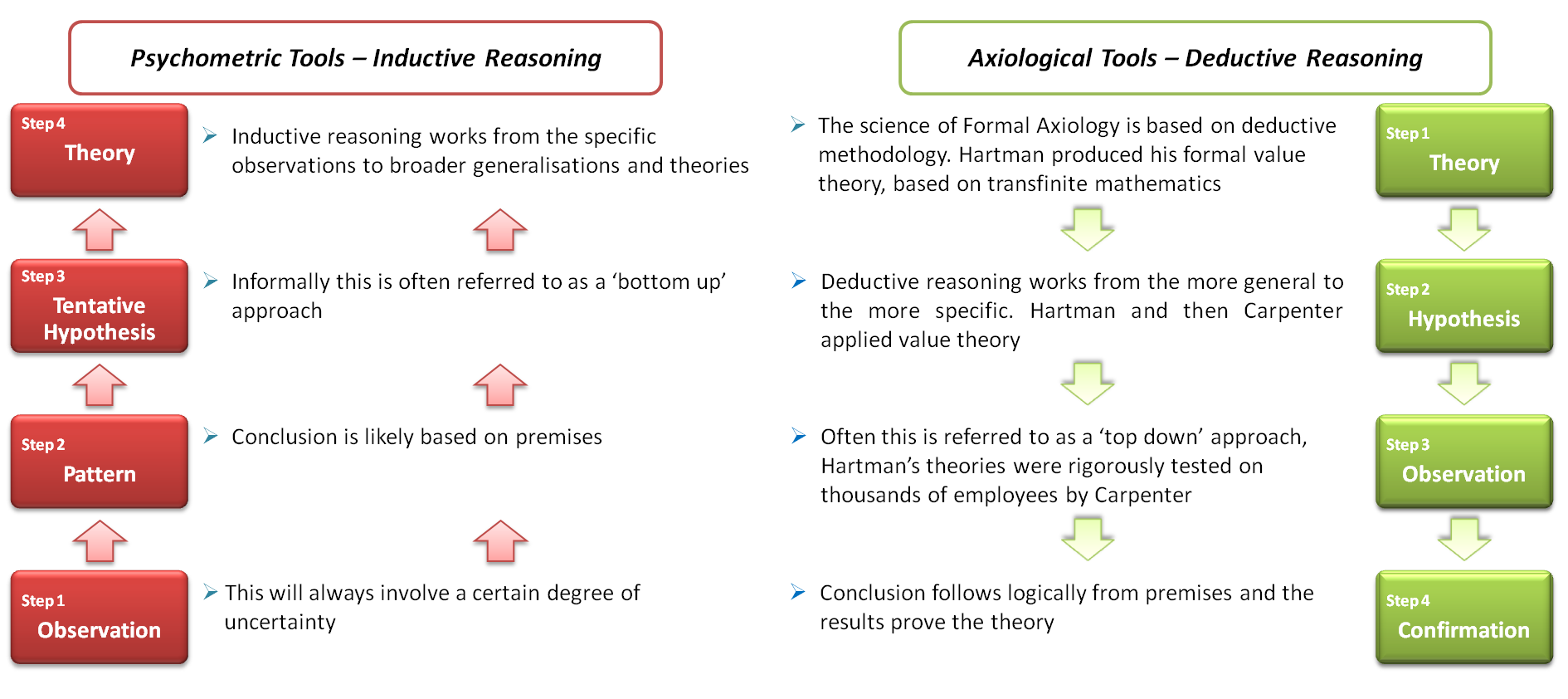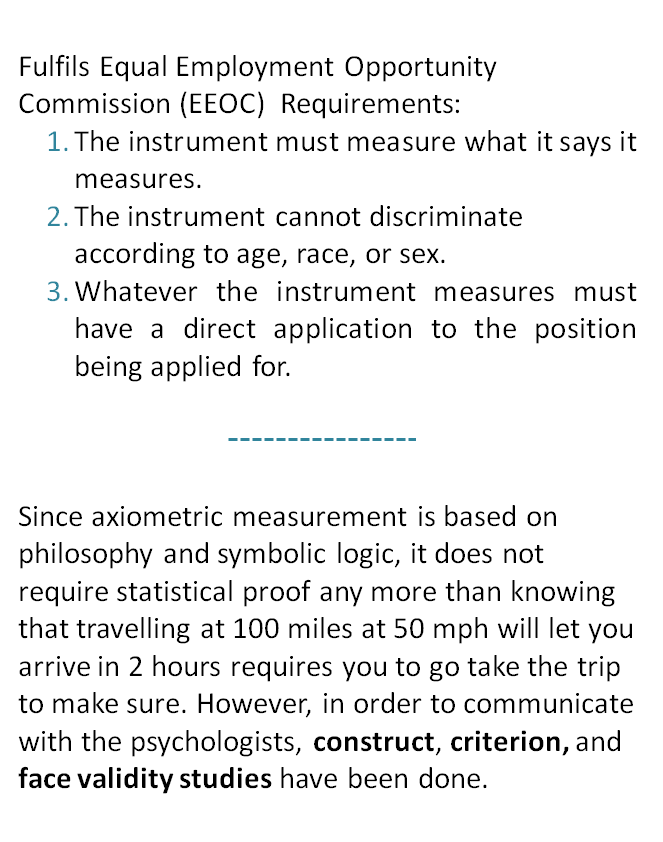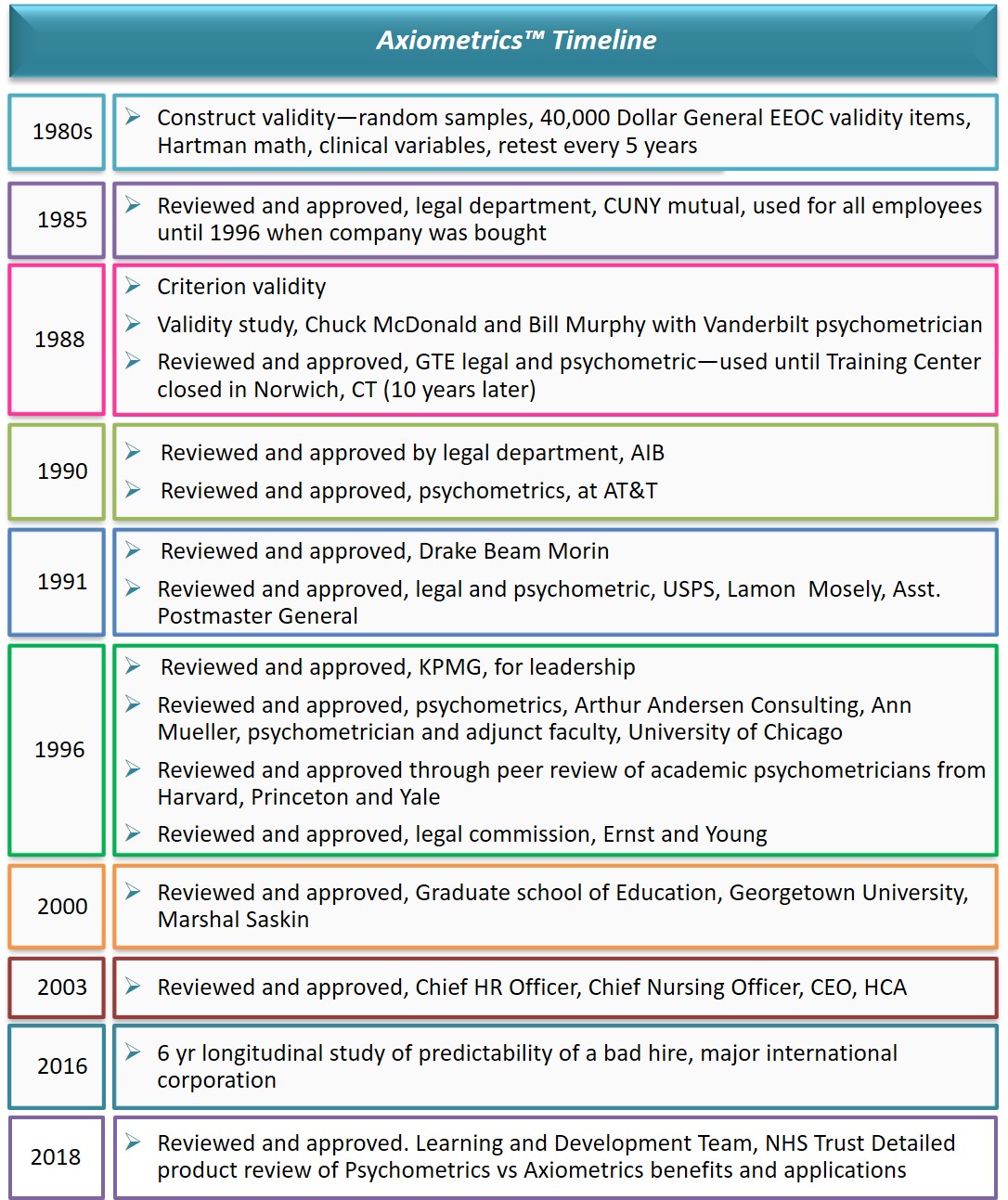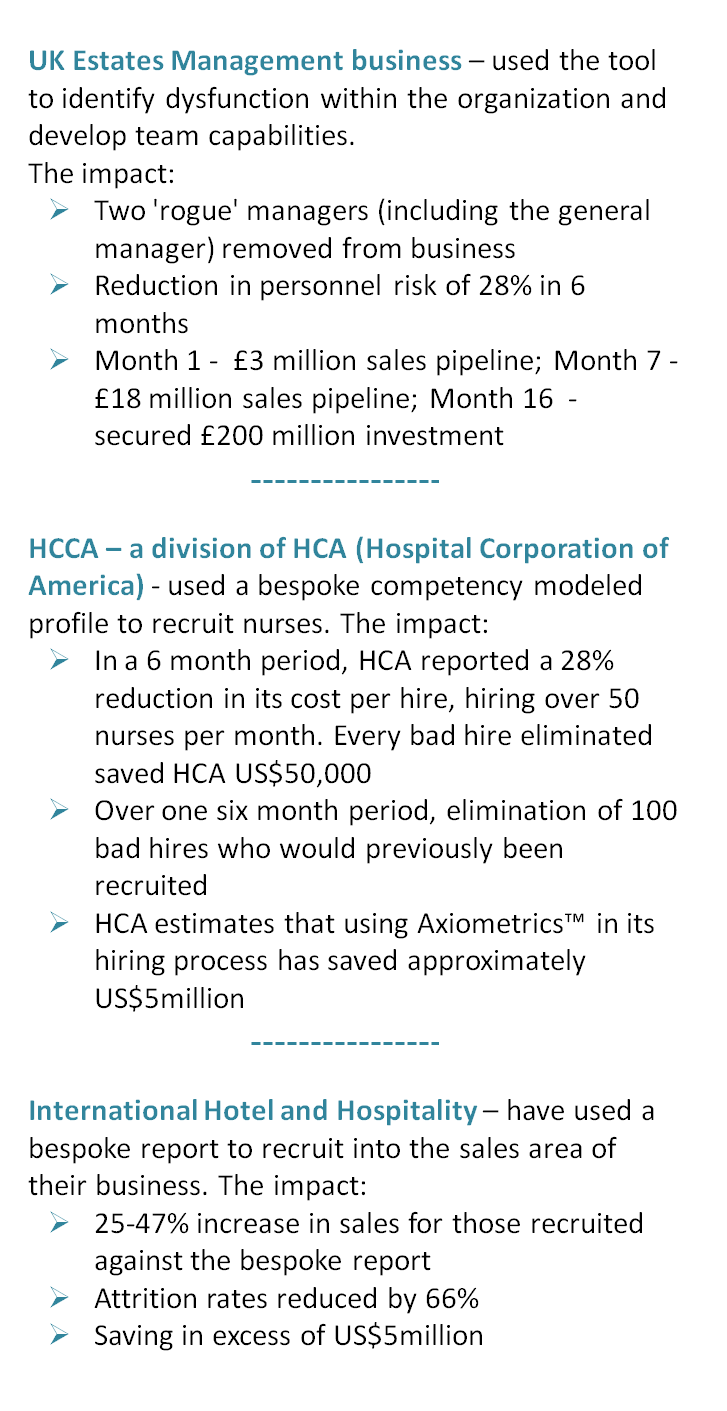Psychometric and Axiometric Methodologies
Psychometric measurement is inductive, reasoning from the particular to the general. Items are collected, grouped through such methods as factor analysis, then assumed to measure actual traits, usually through self- or other report. However, ‘actual’ traits are not being measured, only an individual’s perception of how something might relate to them. Items within the groups are not necessarily organically connected. One item in the group is assumed to measure the trait as much as the next one does. Thus a person could be considered to be extroverted if he agreed with any set of self-descriptors within the pool loading on the factor Extraversion.
Inductive reasoning has more freedom and relies on patterns or trends rather than solid data. The conclusions may not always be accurate.
Axiometric measurement is deductive, reasoning from the general to the particular. A person’s actual thinking process is measured against a universal norm and specific traits are identified. Since the deduction is a logical process, traits are organically related and derived through an “if-then” process. Thus if a person weights his deviation from the universal algorithm in the direction of strategic thinking we know he actually is a strategic thinker. Otherwise he could not have related the rankings that way.
Deductive reasoning is highly accurate but requires time and data to form hypotheses.
Most psychometric assessments use self – or other – report. As Dr Robert Hogan noted (Association for Test Publishers Conference in Phoenix, in 2014), self-report doesn’t give an accurate picture of the person, hence the preoccupation when controlling “faking”. Moreover, as Hogan also mentioned, self-knowledge can be issue. He stated that “the only people who really know themselves are the psychologists!”
Accuracy, objectivity and validity – Limits of self report assessment are clear in such suggestions as that found in the MBTI manual stating that if you don’t agree with the results, read other descriptions and see if one of the other descriptions better describes you. Even the British Psychological Society (BPS) and American Psychological Society (APS) supported “Big Five” assessments reveal this lack of certainty. One of the manuals states clearly: “Because we are using limited number of items, sampled from a broad domain of items, your scores will be sensitive to errors of measurement and will not necessarily agree with measures of the same traits using other items. If people who know you well disagree with the results of the inventory, then the inventory results are probably wrong. If you answer the items carelessly or intentionally try to distort the results, then the results will be incorrect“.
Axiometric measurement does not rely on self report. The person taking the assessment isn’t asked to describe themselves – just to do a mental task. Then the thinking process they use is simply tracked using algorithms developed by a Research Philosopher and Nobel nominee and refined over 40 years by one of his students.
Accuracy, objectivity and validity – Since axiometric measurement is based on philosophy and symbolic logic, it does not require statistical proof any more than knowing that travelling at 100 miles at 50mph will let you arrive in 2 hours requires you to take the trip to make sure. However, in order to communicate with psychologists, construct, criterion and face validity studies have been done.
A 6 year longitudinal study is currently being completed using a major international hospitality corporation. Results so far indicate that this process enables a company to identify a bad hire 80-95% of the time, using a process where the specific differences between high and low performers are identified and candidates are measured against the findings. Axiometric measurement is based on an individual’s thinking patterns vs. what they believe they do/would do. Mathematical algorithms underpin the profile statements generating 6.4 quadrillion different possible response combinations depending on how the person taking the profile organises the statements.




